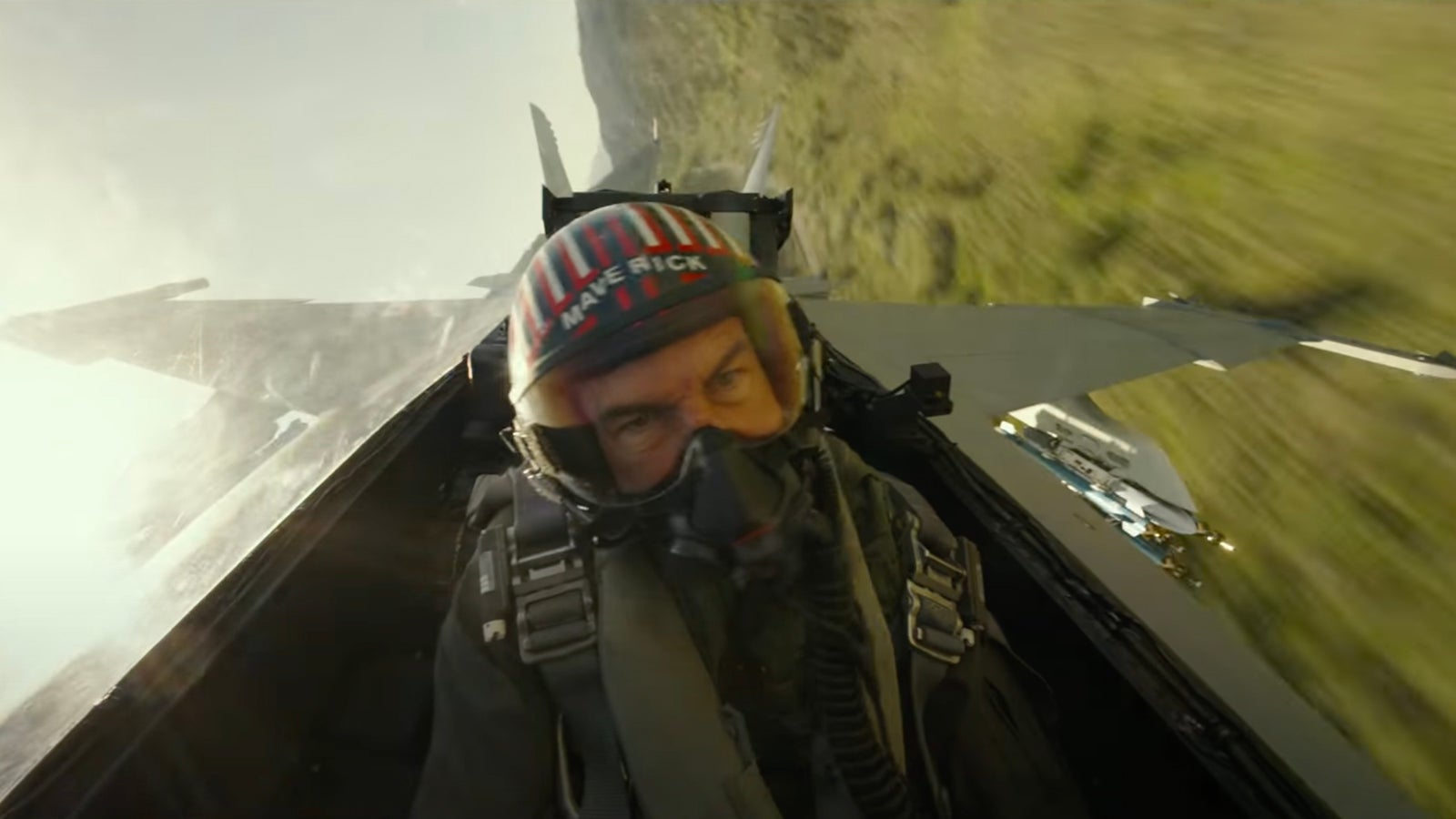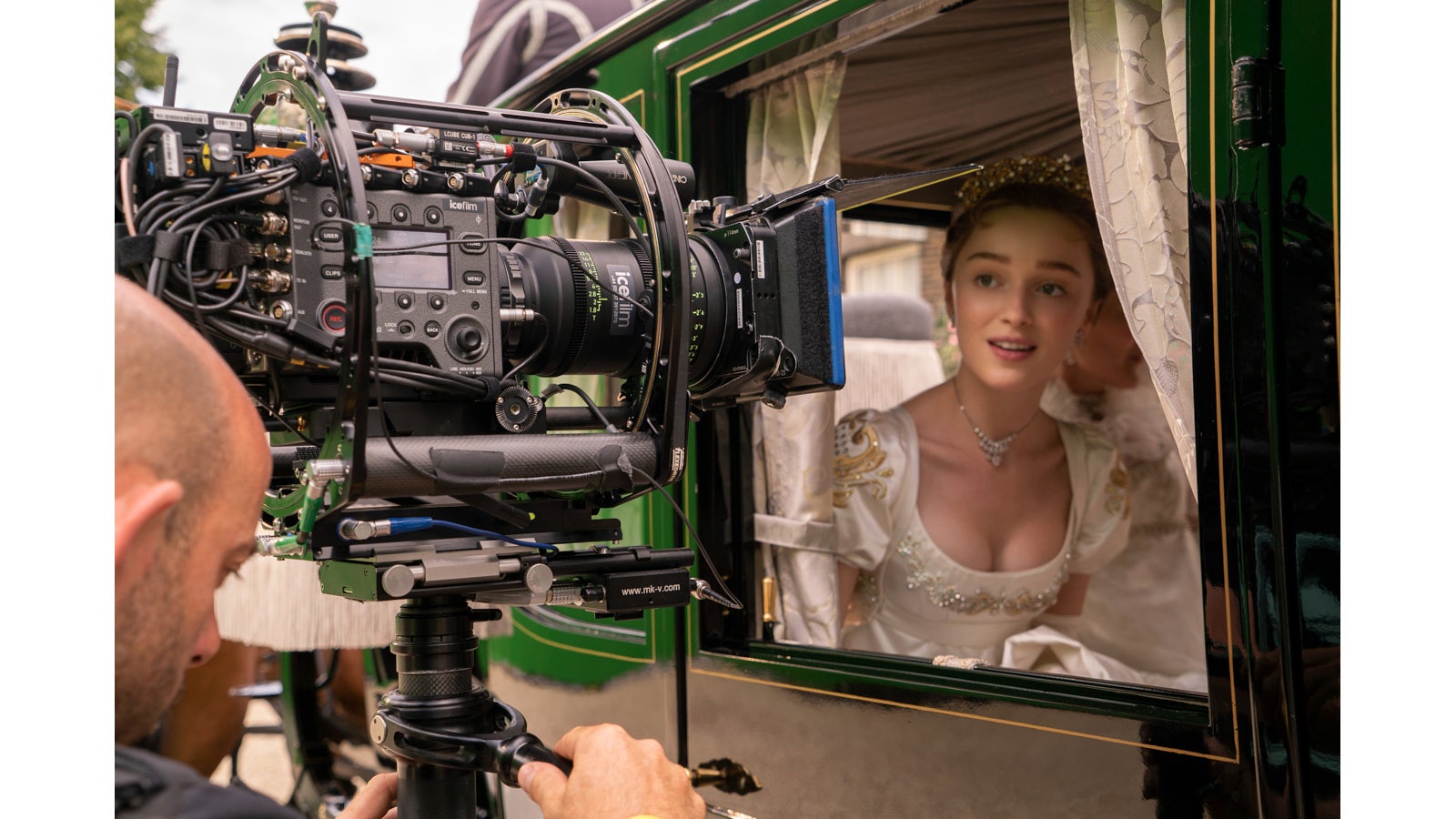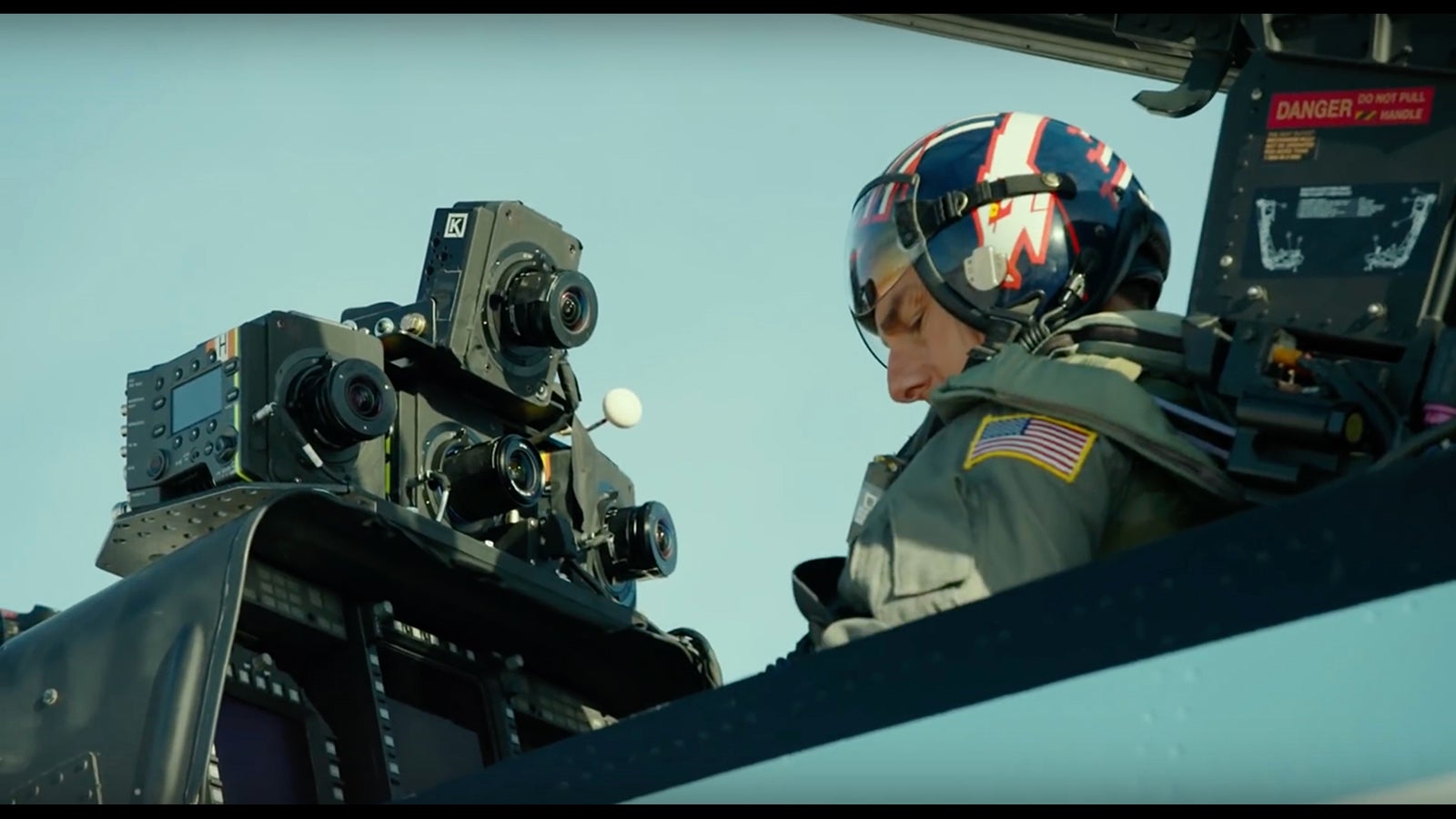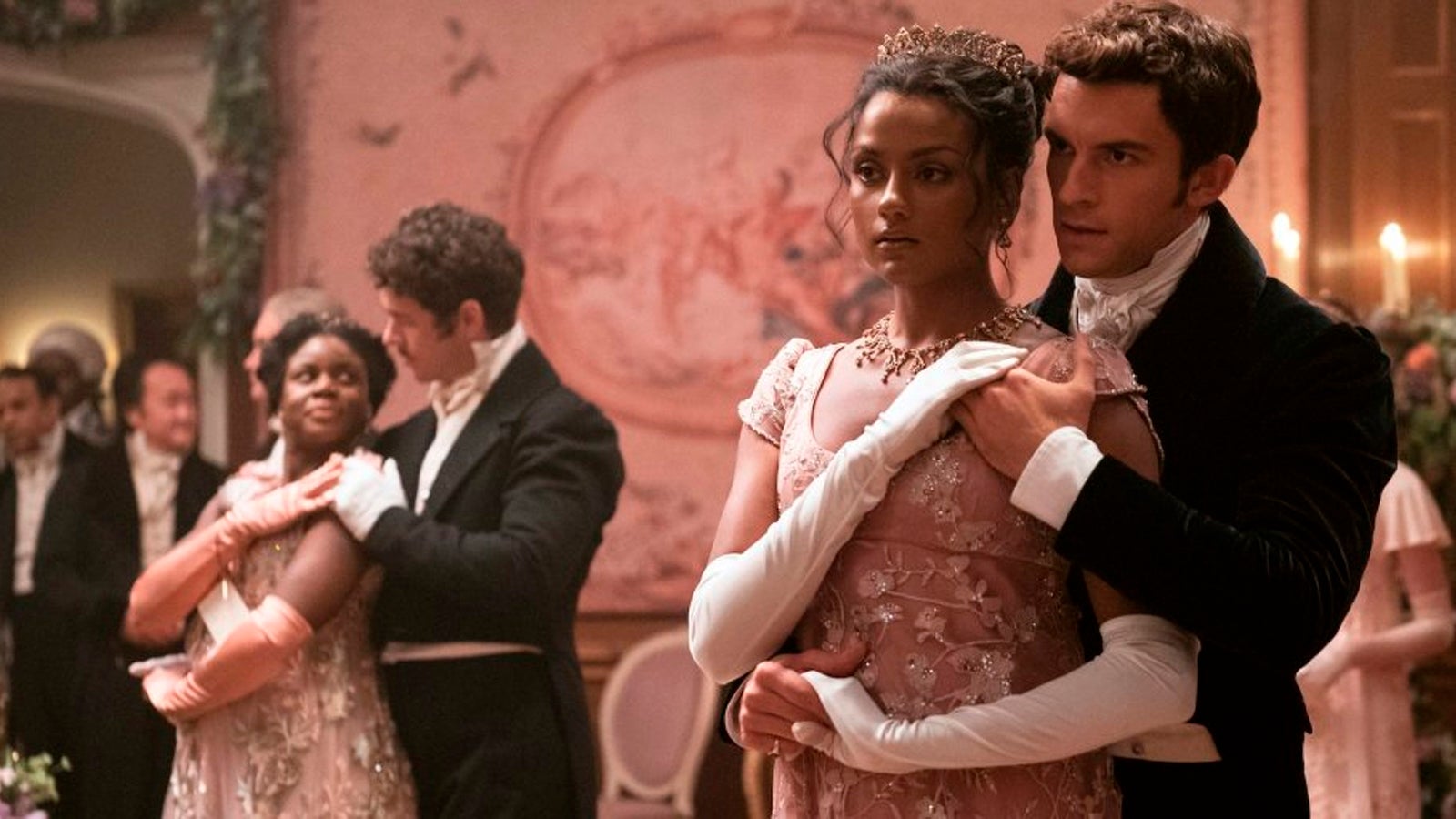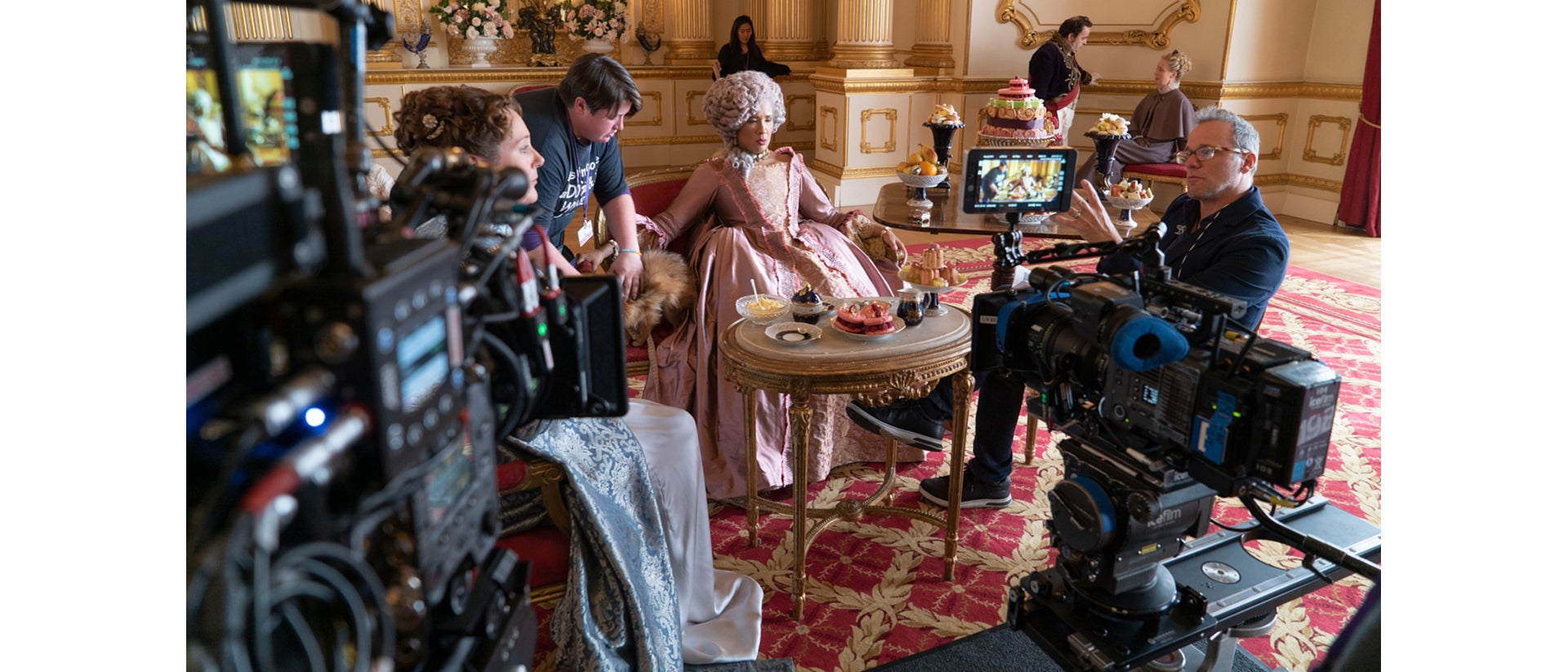
08-16-2021 - Case Study, Gear, Technology
“Bridgerton” – Shot on VENICE – A Conversation with DP Jeffrey Jur, ASC – Part 2
By: Jeff Berlin
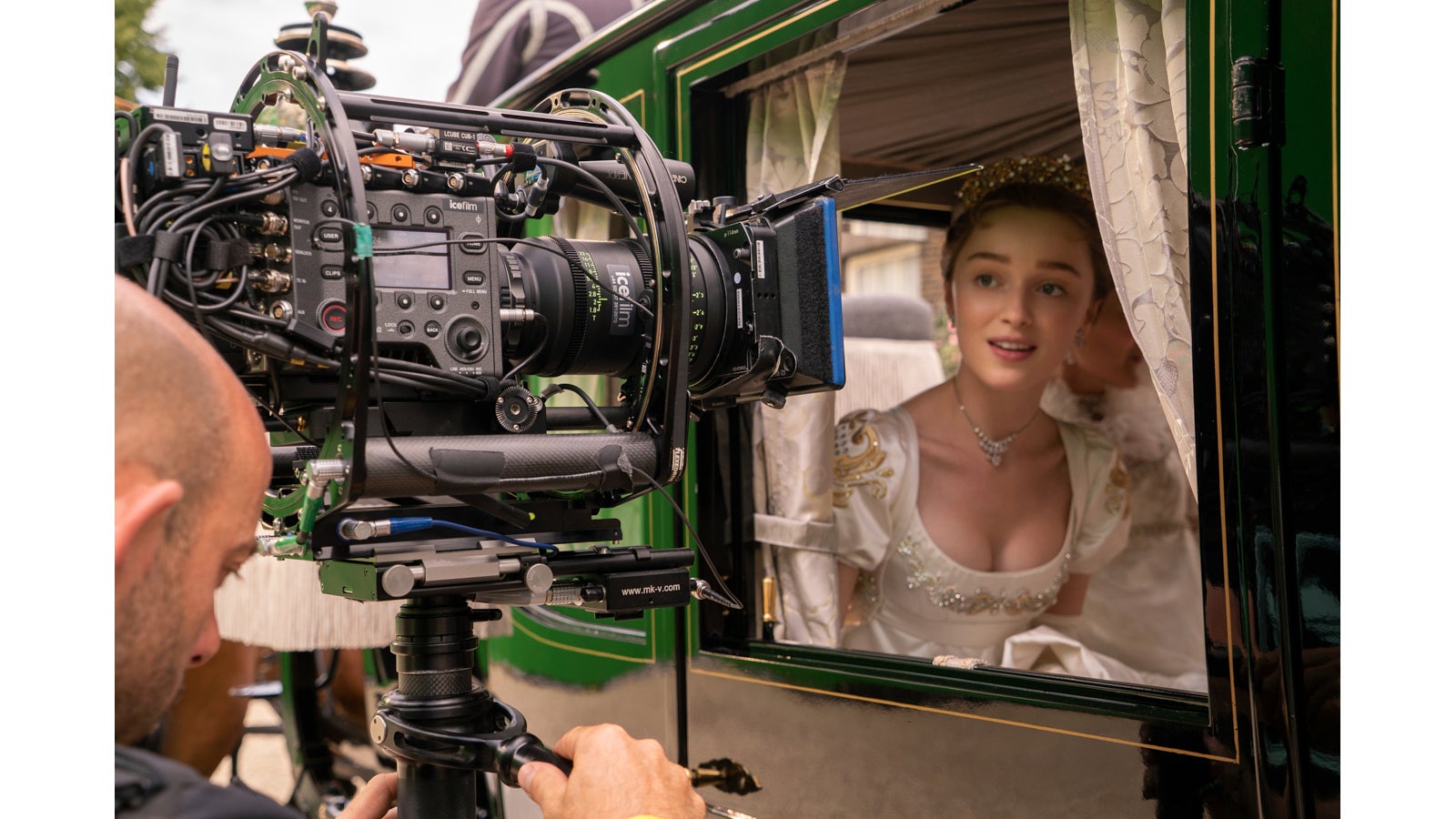
Continued from Part 1.
Bridgerton is about eight close-knit siblings of the Bridgerton family looking for love and happiness in London high society. The series is inspired by Julia Quinn's bestselling novels.
Jeff Berlin:
I’d love to hear about rehearsals and blocking. How did that go on Bridgerton?
Jeffrey Jur:
Rehearsal is everything for me. We can make a shotlist ahead of time, have a grand design, and you can write things down in advance, but it’s not until I see the actors actually moving in a space, and how they look at each other, that informs me where the camera should be, what the light should be, and everything that goes with designing the style for a particular scene. So it's really important to do a rehearsal.
Jeff:
How did you settle on the VENICE for this project?
Jeffrey:
I had heard about the VENICE and started looking into it. My friend Jon Joffin has been working with it so I asked him how he liked it. He said, "You're going to love it and I think you'll be really happy," saying the camera exactly addressed my concerns. He said he was happy with it and encouraged me to try it.
When I started testing it, it all made sense. Seeing the 2,500 ISO as a base was exciting for me. The built-in NDs were really key. It’s great to not have to put another piece of glass in front of the lens. The speed at which you can change ND when you're outside and the weather's changing, and to easily and quickly be able to use ND as a tool for depth of field, which is a key part of photography for me, I also liked.
For example, I'd look at a shot at a T5.6, but then open it up two stops, maybe to T2.8 or even T2, look at the background and say, "Okay, let's put an ND6 in," or whatever was needed to get to that stop to get that specific depth-of-field look. So the internal ND system was a key part of the toolkit for the design of the photography.
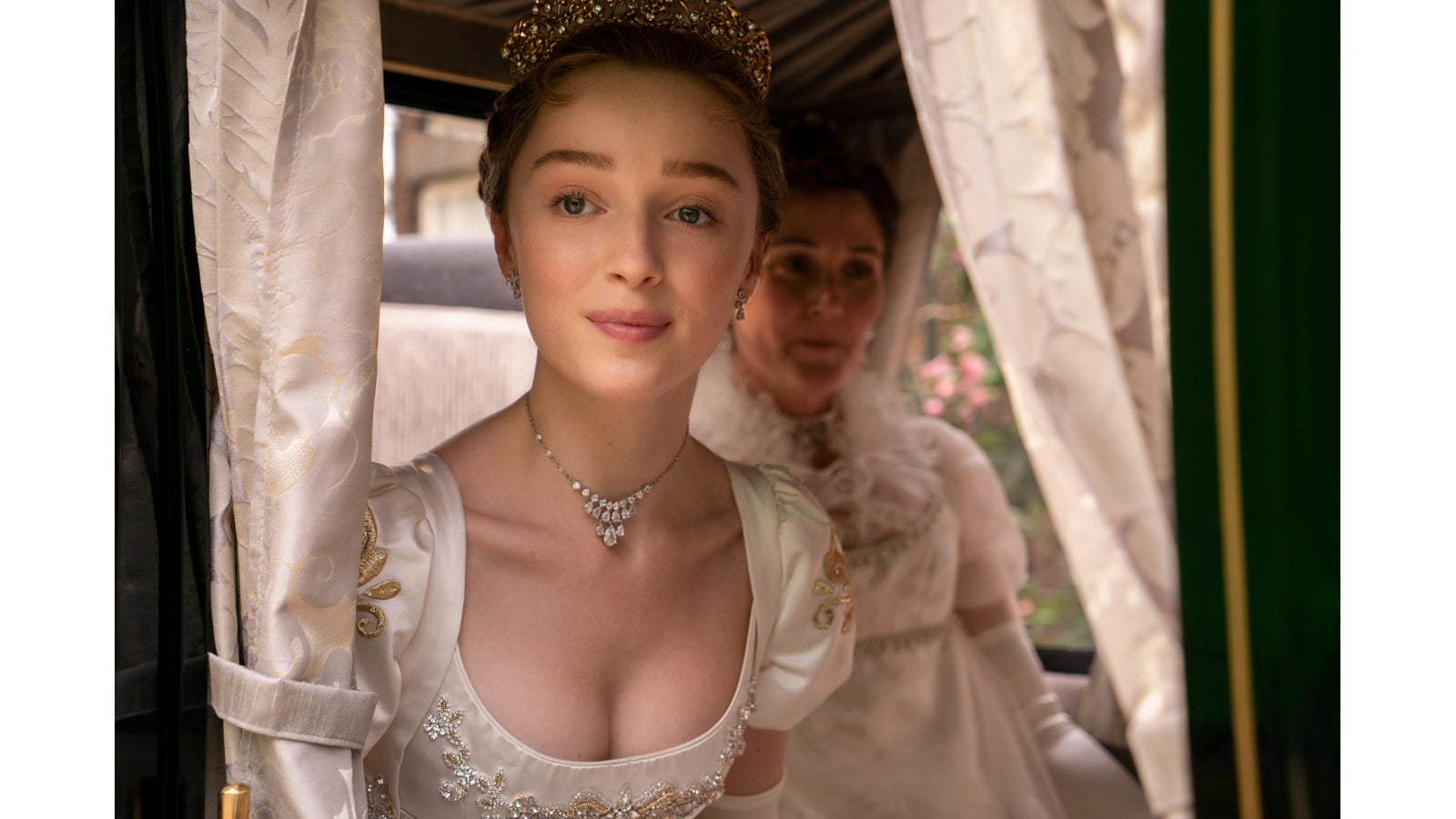
Jeff:
What lenses did you use on this project?
Jeffrey:
I went with ARRI Signature Prime lenses. I really wanted to shoot 6K so we needed to find lenses that covered large format. I felt that there needed to be a lot of resolution to help render all the detail of the sets, the fabrics and costumes, set dressing, the locations. Having all of that rendered in large format, high resolution was really important, so we went with 6K.
The final ratio was to 2:1. I love that horizontal frame for this. It seemed to fit the story very well. Although I think the camera was set to 17:9. 17:9 uses the whole width of the sensor, which I really like. The more pixels, the better. We tested the Signatures and the Leicas but I don't think the Leicas were all available. And the Signatures were beautiful. We rented from a company called ICE in London. Lovely guys, a boutique place.
Jeff:
Did you mostly rate the camera at the base ISOs or did you go up or down from there?
Jeffrey:
I stayed on the base pretty much. I was happy at the lower base, 500, and at 2,500. They were well within the ranges that I needed. At 2,500, I was surprised at how little grain or noise there was. I felt I could even shoot a scene starting at the lower base and then going to the higher base if I needed to.
Jeff:
In the same scene?
Jeffrey:
Yes. I don't think that happened much. We may have been in some situation where we're losing the light and needed to adjust, but I usually pad myself pretty well with lighting. I don't light on the bleeding edge of anything. A lot of people are shooting wide open right now with very little light and just hoping for the best, but I like to have a little more oomph there. I need to have a little more to work with so that when the light or weather does change, I still have a margin to work with.
Candlelight, for example, is not going to vary much, so that's your base and your lighting is based on that. And your practicals and lighting levels tend to be very low. Like I said, at one point I turned all lights off and with just candlelight it looked incredible.
Jeff:
Were there any specific focal lengths that you preferred?
Jeffrey:
I tended to favor the mid-wides, like the 35, 40, 47, they are really lovely. The 47mm was a really popular lens, even for coverage and for close ups or medium close ups, because it tended to be longer feeling than regular super 35 because of the larger format. It was amazing to shoot longer lenses in wider shots and have that depth of field option to be able to soften the backgrounds and not have everything be perfectly sharp. But having said that, a lot of these rooms were so amazing that we kept putting on wider and wider lenses to try and pull it all in. We kept going wider and seeing more beauty.
We even put the 18mm on the camera a few times in some of these locations, where the story was to feel these massive estates, and it looked amazing. That lens was spectacular with very little distortion.

Jeff:
Did you use any sorts of filtration for skin or halation?
Jeffrey:
Yes, we used one filter throughout, the Tiffen Soft/FX 1/4. That was it. The Soft/FX had the most pleasing effect on candlelight and skin tone, and the overall look of the show.
Jeff:
How many cameras were you guys shooting with?
Jeffrey:
We had two full-time, A and B cameras. I was operating A camera. I feel that when you’re present on set as an operator, it makes a big difference. You interact with the crew and the actors. And the director enjoys being able to talk directly to the person in charge of the photography. We would have three cameras once in a while for bigger events like the big balls and for a couple of the boxing scenes.
Jeff:
Those boxing sequences seem to be shot with a more narrow shutter angle. How did you approach the boxing scenes?
Jeffrey:
We did, and it worked really well. It helps freeze the action and you feel the hits a lot more at a 45 degree shutter, which is my favorite setting. I find 90 degree is not quite enough for it to read. 45 is great. 22 can be a bit too much, so 45 degrees is sort of the Goldilocks shutter angle that I prefer for that sort of scene.
Jeff:
Which version of X-OCN did you guys use?
Jeffrey:
X-OCN ST.
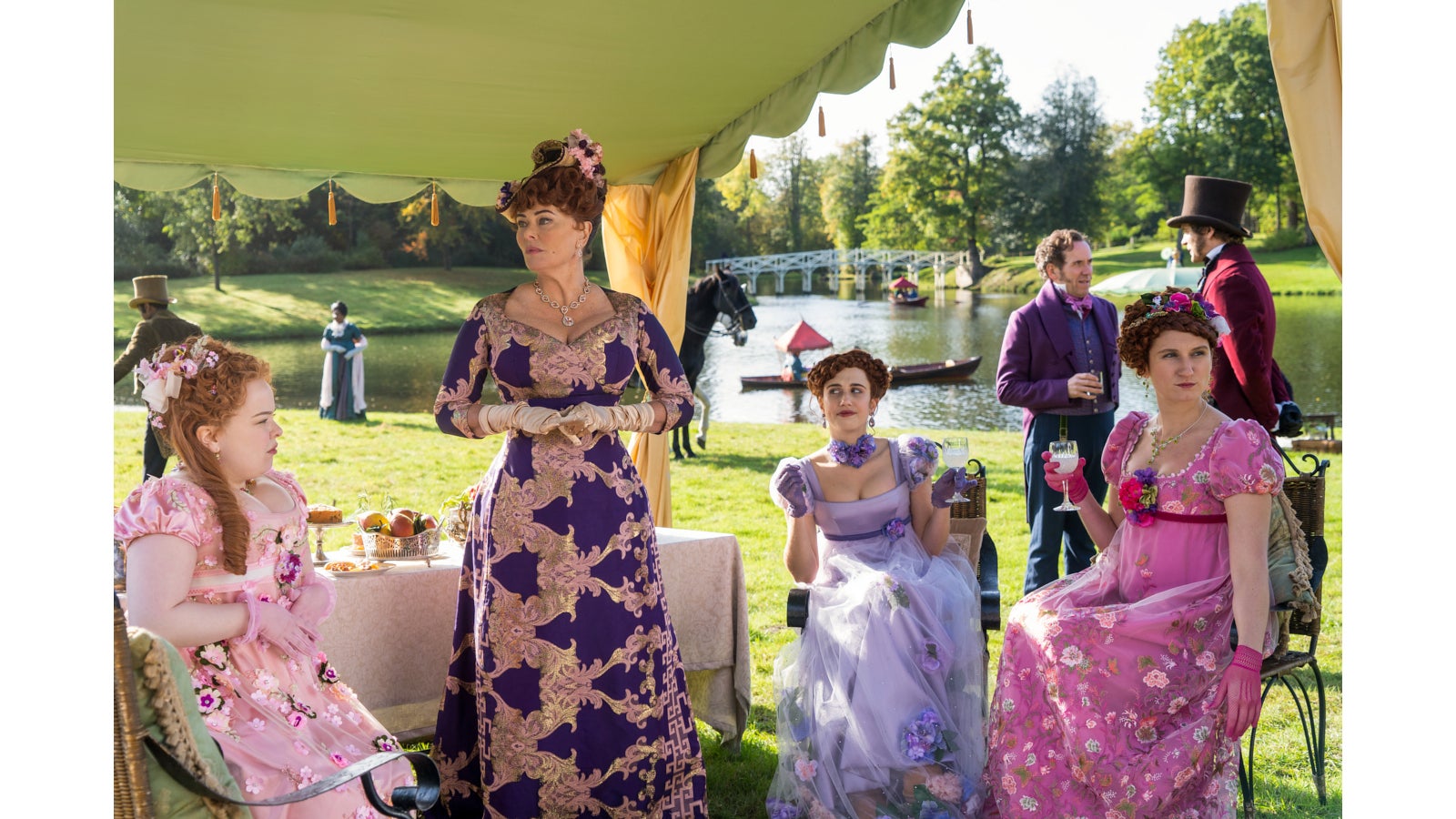
Jeff:
I’ve been watching Bridgerton in Dolby Vision and it looks terrific. How did the color grade go?
Jeffrey:
I have an amazing color timer at Technicolor [now Picture Shop], Pankaj Bajpai. Incredible guy. I've worked with him for almost 20 years. Because of COVID, we ended up working remotely. Technicolor has a live feed option so I could see the session on an iPad and we could talk by phone at the same time - he's at Technicolor, you're in your home, and you're doing a live session. It's amazing.
Jeff:
What were your impressions about how much latitude and flexibility you had with the files once you got into the grade?
Jeffrey:
Oh, incredible. We had some day exteriors that were shot over the course of a couple of days where the weather changed wildly, but we were able to pull all of that information any direction we needed. It was incredible, the range that we had to work with. I was very happy with the color files that we had in post.
Jeff:
How do you feel about the skin tones that the VENICE captures?
Jeffrey:
I was thrilled with how the VENICE reacted to all skin tones. They were beautiful right out of the box with very little correction. We had everything on this show. Dark, light, Black, White, Asian, a mix. The casting was very diverse, so the tones that we had to work with were varied and beautiful, and the camera handled them expertly.
Jeff:
Did you find that the sensor size and lens coverage helped you tell a more intimate story?
Jeffrey:
Absolutely, it's exactly the thing I love most about shooting large format, the control of focus and de-focus of the background. Candles looked amazing, for example, especially on longer lenses when they're out of focus. The environment sort of enveloped these characters in a lush and beautiful way that if everything was sharp on wider lenses, it would not look as dreamy.
The story is a bit of a fantasy and a fable, so when you can shoot on a longer lens and still feel the room around the characters, but still soften it a certain amount, it was beautiful. You're able to be in close yet be on a longer lens and still pull in this beautiful background, even in wide shots.
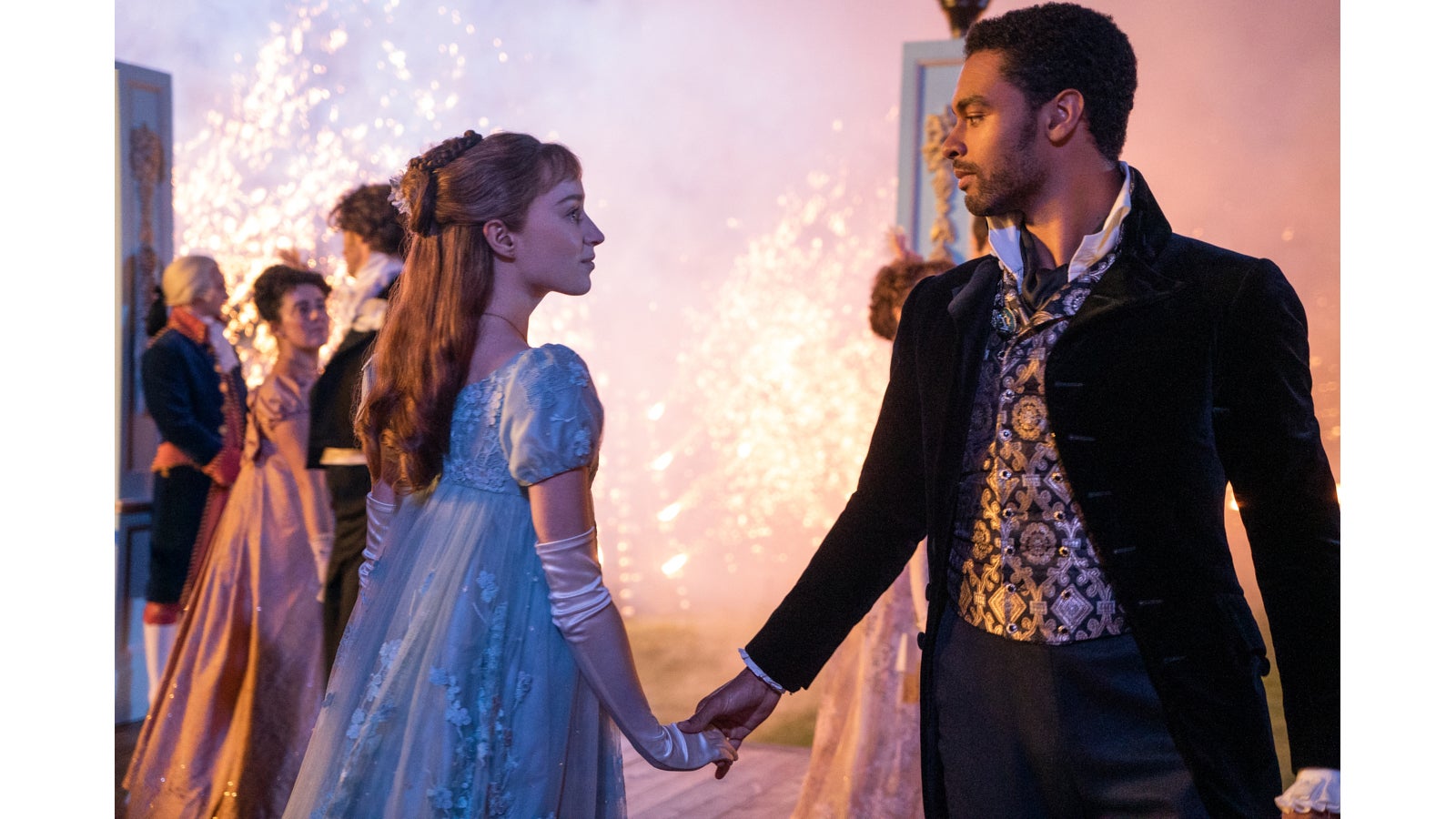
Jeff:
Speaking of being up close, did you have a preferred focal length for getting a beautiful closeup?
Jeffrey:
Yes, the 95mm was popular for those medium closeups. We weren't super, super tight on a lot of shots, but even on a closeup, it's important to see the hair, a bit of the clothes, and the collars and head pieces, of course. It was important to stay a little bit looser on close ups. But the 95mm was perfect for that. A lot of times our Steadicam coverage of those pieces was done on that lens.
Jeff:
It seemed like you were having a lot of fun shooting the show.
Jeffrey:
Absolutely. Yes, it was a happy show. The actors, especially in England, are amazing at this sort of material. They know what the different dialects and different accents should be based on your station in life for that time. And technically, they're incredible with camera, and blocking, so it's effortless. And we had one of the best costume and art departments I've ever worked with. They were incredible.
Jeff:
Do you have any advice for fledgling DPs?
Jeffrey:
Everybody has a different path. For me, it was important to shoot as much as you possibly can, shoot, shoot, shoot. Eventually, the process of converting real life, real light, into photography becomes ingrained. And shoot with anything, even still cameras, whatever you can, so that process becomes second nature.
Once you have that, you can navigate every filmmaking situation you're going to be in. There's going to be a lot of pressure, and big money's being spent, and the clock is running, and it's all on you to get through a day. That you have that photographic process now second nature, you’ll always be able to get yourself out of trouble no matter how tricky the situation because you have this grounding in the photography process. So, shooting as much as you can, that would be my advice.
Jeff:
Were there any early lessons that you learned as a DP that have stuck with you?
Jeffrey:
There's a movie called Hoosiers. Gene Hackman is a basketball coach for a small town team, and they go to the big game, and it's intimidating, playing in a big stadium. He measures the court and makes the team of small-town players realize that it's exactly the same court as back home. So, for me, I think about the film gate, the small port that light goes through in the camera is more or less the same no matter how big the production is. You're always just pushing light through that same portal.
So, no matter how big the production is, or how elaborate, or how many trucks are there, or how many people are on set, or what kind of money is being spent, all you have to do is push light through that little space. And it's the same space that you had in film school, and the same one you have on big productions. So, it's reassuring knowing that it's the same no matter what.
